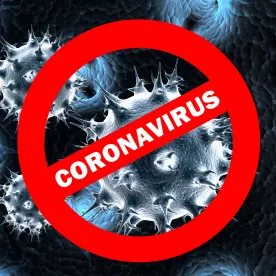The Centers for Medicare & Medicaid Services (CMS), the Department of Health and Human Services (HHS), the Office for Civil Rights (OCR), the Office of the Inspector General (OIG), and other Federal and State agencies and regulatory boards across the nation are taking unprecedented steps to provide hospitals and other providers on the front lines battling the 2019 Novel Coronavirus (COVID-19) pandemic with maximum flexibility. Hospitals have been the main focus of funding and other efforts to provide regulatory relief, and private physician practices have struggled to sort through what opportunities may be available to them. Oncology practices face a unique problem. They must continue to treat cancer patients in the fight of their lives, during a time when the nation’s attention is fully focused on the pandemic.
Many of the regulations that are being introduced to fight COVID-19 can benefit cancer care providers as they work to ensure their patients maintain access to much-needed treatments and can safely participate in critical clinical trials, address staffing shortages resulting from isolated or quarantined staff, offset decreased cash flow from patients that may not be able to come in for treatments, and manage strained supply chain and resource shortages during the crisis. This article will provide an overview of some of the recent regulatory shifts of which oncologists should be aware of during the pandemic. Some of these regulatory changes, particularly in the area of telehealth, have the potential to drive innovation in ways that are likely to result in profound and lasting change in cancer care delivery.
This post will be released in two parts, with today’s focus being on the digital health, clinical trials, and reporting deadlines. For more information about the Medicaid, Grants, and Stark Law Waivers, you can refer to our previous post.
Expansion of Telehealth
Opportunities to leverage telehealth in order to monitor and care for immuno-compromised patients from the safety of their own homes have expanded significantly in connection with COVID-19. Increased reimbursement opportunities and greater operational flexibility under privacy and security laws are allowing community cancer centers and providers to experiment with remote check-ins and E-visits in ways that had previously not been available—and giving the government the opportunity to see the effects of such changes in real-time. It is widely expected that the COVID-19 pandemic will only accelerate the future reliance on telehealth in health care delivery, including oncology.
A word of caution applies, however. Telehealth is regulated by myriad agencies, including at the State level. For example, remote prescribing of controlled substances is often regulated, and telehealth providers will need to comply with their state licensing requirements. Many states are now stepping in and loosening restrictions in light of COVID-19, although this is resulting in a patchwork of regulations that can be challenging to navigate. Providers seeking to better leverage telehealth should consult with counsel to understand what waivers are in place at the state level.
Reimbursement
On the reimbursement front, CMS has expanded coverage of telehealth services for people with Medicare. During the period of the Public Health Emergency, CMS will pay for more than 80 additional services when furnished via telehealth, and is allowing telehealth to fulfill many face-to-face visit requirements for clinicians to see their patients in inpatient rehabilitation facilities, hospice, and home health. For private payors, coverage requirements may vary, depending on the plan. During the pandemic, individuals can use commonly available interactive apps with audio and video capabilities to visit with their clinician. Recent reimbursement changes include:
- Reimbursement for Medicare Telehealth Visits: As of March 6th, Medicare is paying for Medicare telehealth services furnished to patients in broader circumstances, at the same rate as regular, in-person visits. This includes telehealth services furnished to beneficiaries in any health care facility and in their home. Medicare telehealth services are generally billed as if the service had been furnished in-person. For Medicare telehealth services, the claim should reflect the designated Place of Service (POS) code 02-Telehealth, to indicate the billed service was furnished as a professional telehealth service from a distant site. The Medicare coinsurance and deductible would generally apply to these services, however, the OIG is providing flexibility for health care providers to reduce or waive cost-sharing for telehealth visits paid by federal health care programs. To the extent the 1135 waiver requires an established relationship, HHS will not conduct audits to ensure that such a prior relationship existed for claims submitted during this public health emergency.
- Virtual Check-ins: Practitioners can now have a brief communication with established (or existing) Medicare patients in their home (HCPCS codes G2012 and G2010). Unlike Medicare telehealth visits, which require audio and visual capabilities for real-time communication, these virtual check-ins can be conducted through a variety of communication methods, including synchronous discussion over a telephone or exchange of information through video or image. In addition, where such visits could previously only be offered to patients that had an established relationship with their oncologist, now oncologists can provide these services to both new and established patients. The patient must verbally consent to receive virtual check-in services. Medicare coinsurance and deductible generally applies.
- E-visits: Established Medicare patients may have non-face-to-face patient-initiated communications with their doctors without going to the doctor’s office by using online patient portals. This applies nationally, not just in rural areas. The billing practice must have an established relationship with the patient, and the patient must generate the initial inquiry and verbally consent to receive virtual check-in services. Communications can occur over a 7-day period. The services may be billed by practitioners who may independently bill Medicare for evaluation and management visits (for instance, physicians and nurse practitioners) using CPT codes 99421-99423 and HCPCS codes G2061-G2063. The Medicare coinsurance and deductible will apply. Medicare Part B also pays for E-visits or patient-initiated online evaluation and management conducted via a patient portal.
Privacy and Security
The HHS Office for Civil Rights (OCR) has issued a notice that it will exercise enforcement discretion and waive penalties for violations under the Health Insurance Portability and Accountability Act of 1996 (HIPAA) related to the good faith provision of telehealth using non-public facing audio or video communication products during the COVID-19 pandemic. This exercise of discretion applies to telehealth provided for any reason, regardless of whether the telehealth service is related to the diagnosis and treatment of health conditions related to COVID-19. Covered health care providers, including oncologists, may use popular applications that allow for video chats, including “Apple FaceTime, Facebook Messenger video chat, Google Hangouts video, Zoom, or Skype to provide telehealth” without risk of penalty for noncompliance. In addition, “providers are encouraged to notify patients that these third-party applications potentially introduce privacy risks, and providers should enable all available encryption and privacy modes when using such applications,” and for additional privacy protections, covered providers are encouraged to use technology vendors that are HIPAA compliant and will agree to enter into HIPAA business associate agreements (BAAs). Video communication that are public facing, such as “Facebook Live, Twitch, TikTok, and similar video communication applications” are not covered by the OCR’s notice and should not be used in the provision of telehealth by covered health care providers.
Provision of Technology and the Stark Law
The Stark Law waivers discussed below may allow community cancer centers to receive support from hospitals and other entities in their effort to implement telehealth in response to COVID-19. For example, under the applicable waivers, CMS has contemplated that an entity would be able to provide free telehealth equipment to a physician practice to facilitate telehealth visits for patients who are observing social distancing or in isolation or quarantine.
Administration of Clinical Trials
Access to clinical trials during the COVID-19 pandemic is also being significantly impacted as enrollment is dipping and certain trials are going on hold. On March 27th, the Food and Drug Administration (FDA) issued guidance for industry, investigators, and institutional review boards to support continuity and response efforts during this time. The guidance provides various general considerations to address difficulties in meeting protocol-specified procedures, including administering or using the investigational product or adhering to protocol-mandated visits and laboratory/diagnostic testing to assist sponsors in assuring the safety of trial participants, maintaining compliance with good clinical practice (GCP), and minimizing risks to trial integrity. The guidance describes various considerations for both ongoing trials and trials where policies and procedures are not already in place (including the potential use of telehealth to perform safety assessments in clinical trials).
For all trials, the FDA asks sponsors to describe in appropriate sections of the clinical study report (or in a separate study-specific document) the contingency measures implemented to manage study conduct during disruption of the study as a result of COVID-19 control measures; a listing of all participants affected by the COVID-19 related study disruption by unique subject number identifier and by investigational site, and a description of how the individual’s participation was altered; and provide the analyses and corresponding discussions that address the impact of implemented contingency measures (e.g., trial participant discontinuation from investigational product and/or study, alternative procedures used to collect critical safety and/or efficacy data) on the safety and efficacy results reported for the study.
Reporting Deadlines Extended
Cancer care providers participating in the prospective payment system (PPS)-exempt cancer hospital quality reporting program (PCHQR) for cancer hospitals, the Merit-based Incentive Payment System (MIPS) and certain other quality reporting and value-based purchasing programs have received reporting extensions. The exceptions apply to March and April 2020 reporting deadlines that for some programs are associated with Q4 2019 reporting data and include the following:
- PCHQR: Data will not be required for the HCP and CDC infection measures for May 2020 submission deadlines (covering discharge periods October 1, 2019–December 31, 2019 (Q4 2019) and January 1, 2020–March 31, 2020 (Q1 2020)).
- Hospital Consumer Assessment of Healthcare Providers and Systems (HCAHPS): Data will not be required for the April, July, and October 2020 submission deadlines under the Survey (covering discharge periods October 1, 2019–December 31, 2019 (Q4 2019), January 1, 2020–March 31, 2020 (Q1 2020), and April 1, 2020–June 30, 2020 (Q2 2020)). For claims-based measures, qualifying claims will be excluded from measure calculation January 1, 2020–March 31, 2020 (Q1 2020) and April 1, 2020–June 30, 2020 (Q2 2020) reporting periods.
- 2019 Merit-based Incentive Payment System (MIPS): The data submission deadline has been extended from March 31 to April 30, 2020. In addition, for the 2019 performance period, CMS is reweighting the MIPS performance categories for MIPS eligible clinicians who do not submit their 2019 MIPS data by April 30.
- Additional reporting exceptions will apply for certain inpatient and outpatient hospital programs, including under the Hospital Inpatient Quality Reporting (IQR) Program, the Hospital-Acquired Condition (HAC) Reduction Program, the Hospital Value-Based Purchasing (VBP) Program, and the Hospital Outpatient Quality Reporting (OQR) Program, and under the Quality Reporting Program (QRP) reporting requirements for all HHAs, Hospices, IRFs, LTCHs and SNFs.




 />i
/>i

